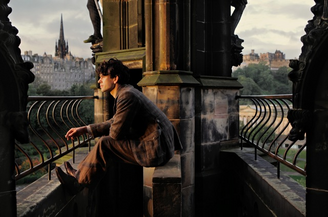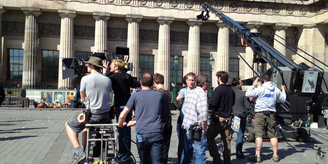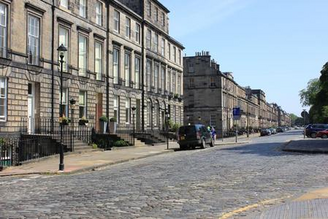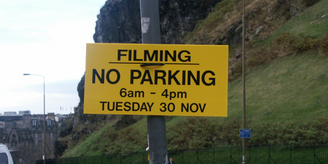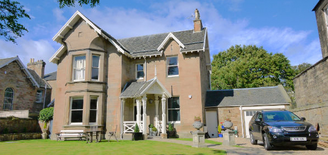Step 1: Choose Edinburgh
Ever wondered what it takes to film in Edinburgh?
Rosie Ellison, Head of Film Edinburgh, breaks it down for us.
The first question is always about scale – how large is the shoot and what are you planning to do? Film Edinburgh deals with over 500 productions a year, of which 65% come to fruition in any given year. TV dramas and feature films make up only 4% of the total number of productions, while the majority are what we term ‘low impact’ – documentaries and factual TV, light entertainment, corporate promos and short films. These shoots usually involve only 5-10 production crew and on the whole do not cause any kind of obstruction to paths or roads, which removes the need for permits and traffic management. This allows us to operate with a light touch, and we ask only for confirmation of location and activity so that we can flag any clashes, make introductions to location contacts (e.g. parks, public / private buildings) or crew & facilities, and make sure the police and local authority are aware of what’s happening.
Low impact shoots, while being relatively straightforward and cost effective for the production company, are great value for the city in terms of reach. A show like Bargain Hunt is watched by over 2 million people every week and showcases interesting parts of the region to audiences.
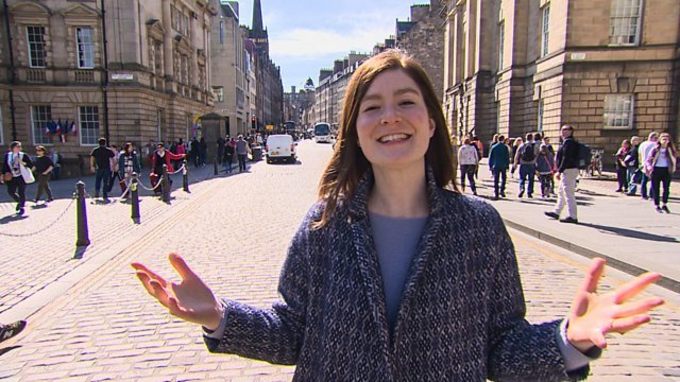
Bargain Hunt on the Royal Mile
TV dramas and feature films, though making up only 4% of the amount of production in the area, produce at least 70% of the economic impact in the region given their much larger scale. Employing between 40 and 400 crew and calling upon a range of local facilities from bowsers and cranes, to traffic management and glaziers, feature films and TV dramas are a presence that is felt wherever they take place. They may use a building or a street for a few hours or for a few days, and while there may be only one or two actors, there are likely to be at least 40 crew at the filming location in addition to 10-20 trucks containing heavy equipment and cabling that needs to be as close as possible to the location to minimise hazards both to the public and filmmakers. In addition, a large-scale shoot may also have a ‘unit base’ where cast are prepared for the shoot, where the production team set up mobile offices and where meals are served. This can look something like a truck village.
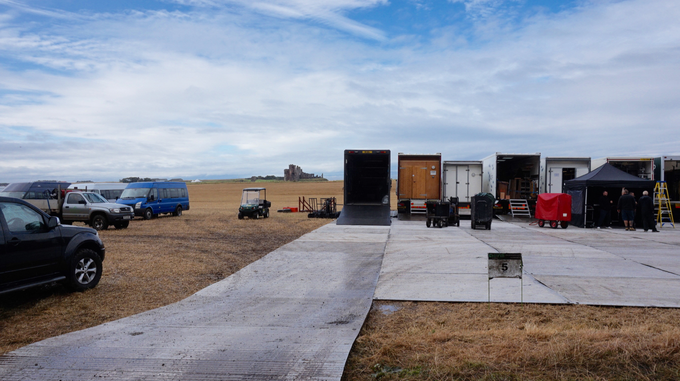
Mary Queen of Scots technical unit at Seacliff
Large-scale productions take weeks, sometimes months, to organise. Film Edinburgh coordinates communication with all relevant agencies and local authority services, and brings everyone together for a round to work out how best to achieve goals while striving to minimise disruption as much as possible. The Code of Practice for Filmmakers provides guidance about the processes and procedures involved in every aspect of filming in the city, from catering to cones, and we insist on careful planning with regard to Health & Safety. We encourage clear communication with all residents and businesses likely to be affected in a timely fashion. To ensure safe practice, permits or notices will be required temporarily obstruct roadways, erect cranes / scaffold, remove or hide street furniture and signage or book parking. Productions must reinstate locations and remove waste upon completion at a location. Filming in anti-social hours is by agreement only following detailed consultation with any residents / businesses as well as the local authority and Police Scotland. This is to protect residents from unnecessary disruption and nuisance which would only serve to put a dampener on public support for filming.
A major TV production like Downton Abbey can reach UK audiences of 10 million with international audiences having the opportunity to fall in love with a show down the line. International feature films like Avengers: Infinity War are watched by hundreds of millions of people worldwide for years beyond the release date, so the promotional opportunities are second to none.
The aim of the film office in this is to maintain a film-friendly city-region which involves striking a balance between the needs of the filmmakers and those of the local community. The Code of Practice is an A-Z guide in how to achieve this, but we would encourage filmmakers and residents alike will contact us any time they have queries about filming in the city.


